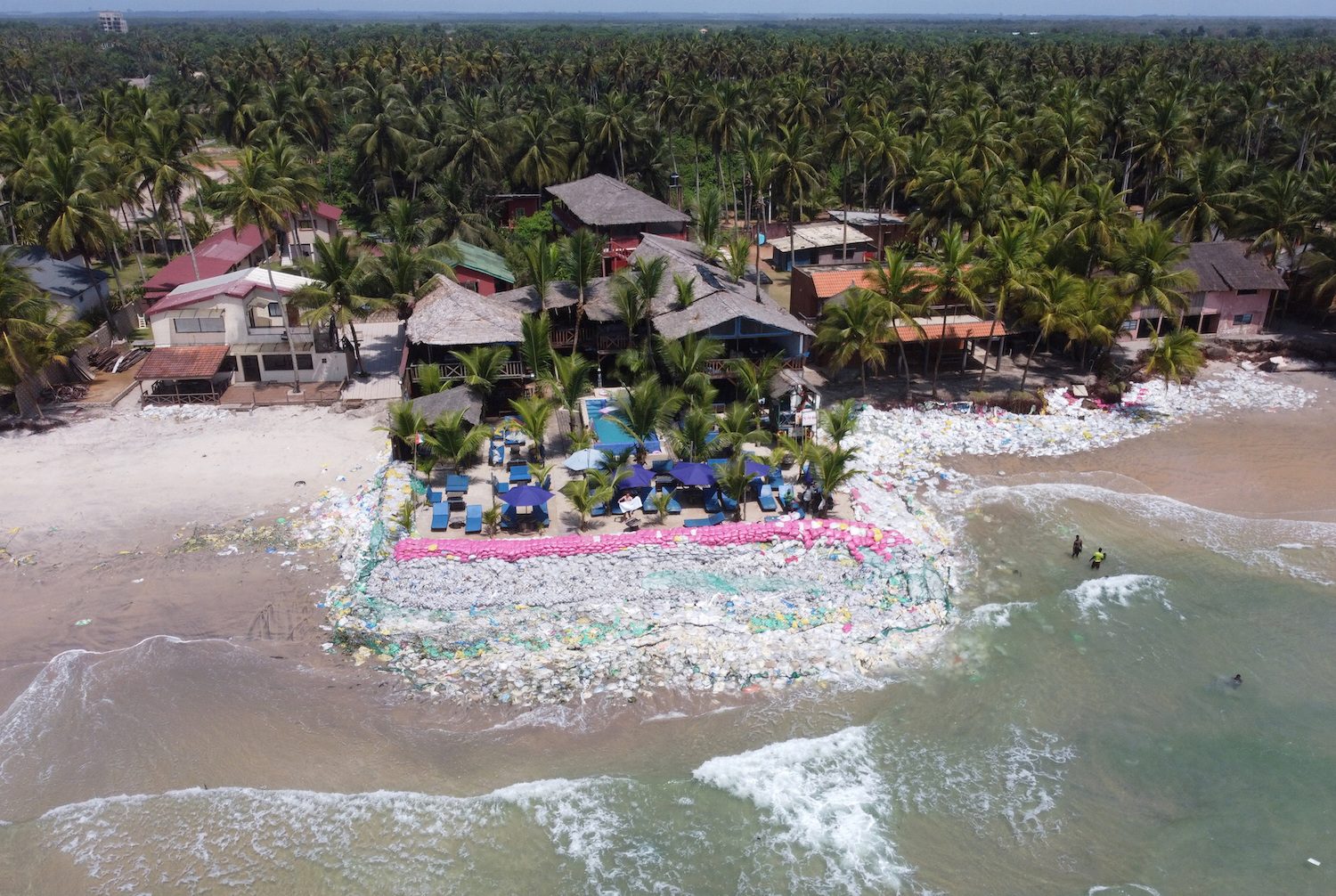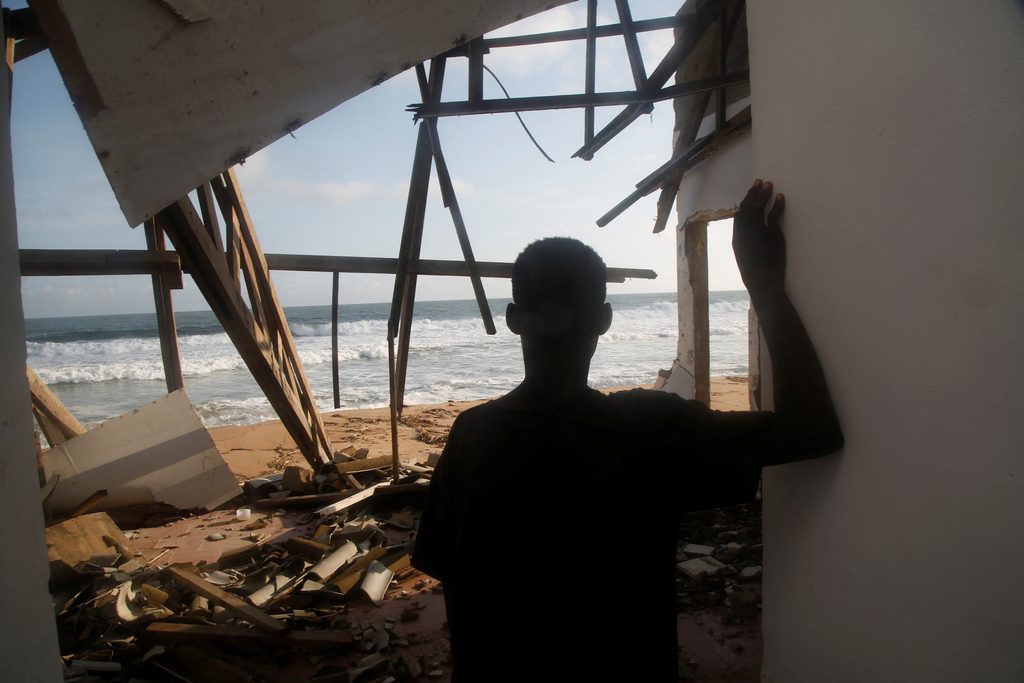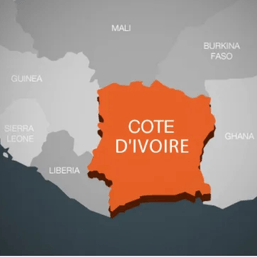SUMMARY
This is AI generated summarization, which may have errors. For context, always refer to the full article.

ASSINIE, Ivory Coast – On a shrinking strip of beach in southeast Ivory Coast, hotel owner Habib Hassan Nassar has to stack thousands of sandbags each week to protect his property from the rising sea.
Thanks to the meters-high sandbag barricade, the Kame Surf Camp hotel clings to its section of beach in the resort of Assinie, even as the waves hem the hotel in on three sides and, in a recent surge, devastated the businesses of its neighbors.
“Frankly, I am exhausted,” said Nassar, 50, who first came to the area as a child when this stretch of beach on the Gulf of Guinea was much wider and it took five minutes on foot to reach the shoreline.
Now he spends up to 1 million CFA francs ($1,640) a week to keep the sea at bay and his business afloat, buying truckloads of sand and hiring workers to pour it into bags and shore up the hotel’s defenses.
Such expenses are likely to increase. Without adaptation, damage from sea level rise could cost 12 large African coastal cities up to $86.5 billion by 2050, according to United Nations climate experts. Those cities include Ivory Coast’s commercial capital Abidjan, just down the coast from Assinie.
“A small business like mine, all it can do is fill sandbags and put them out front and pray for the best,” Nassar said, surveying his sea wall in a skull T-shirt bearing the slogan: “Call of the Wave.”

The rapidly growing populations of West Africa’s low-lying coastal areas are particularly exposed to rising sea levels, a trend that is accelerating globally due to extreme glacier melt and record ocean heat levels, the World Meteorological Organization warned in April.
Coastal erosion at the palm-fringed tourist haven of Assinie is classified as of particular concern due to the high rate of beach loss at a resort that is an important economic hub, according to Ivory Coast’s National Coastal Environment Management Program. It says the national coastal erosion rate averages between 0.5 and 3 meters a year.
Over several days in August, a series of rogue waves underscored the vulnerability of Assinie and other coastal towns east of Abidjan.
The oversized waves pummeled the shore, striking higher than ever before and devastating homes and businesses.
“I was lucky enough to anticipate…but if you look around me, everything else has been completely destroyed,” said Nassar, recalling the thunderous crash of the six- and seven-meter-high waves against his homemade ramparts.
More than three months on from the onslaught, the water has receded from its peak but other hotels and restaurants are struggling to reopen after the waves swept away beach huts, swamped swimming pools, and knocked down sea-facing walls.

The coordinator of the National Coastal Environment Management Program, Eric Djagoua, told Reuters such extreme events are becoming more frequent and said more political will was needed to protect vulnerable coastal infrastructure.
The urgency is clear. West Africa’s coastal areas generate at least 56% of the region’s economic activity and host a third of its population, according to a World Bank study from 2019.
Even as needs rise, richer countries are falling short on a promise to give $100 billion a year to help poorer countries adapt to climate change impacts like sea level rise.
For some, it is already too late.
Thirty kilometers down the coast from Kame Surf Camp, 60-year-old Alex Messan Kouassi stands in the wreckage of his home and hotel that the waves tore through in August.
“Everything is gone…the sea came and took it all, what can I do?”

– Rappler.com
$1 = 607.3700 CFA francs
Add a comment
How does this make you feel?




There are no comments yet. Add your comment to start the conversation.